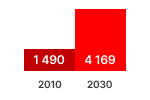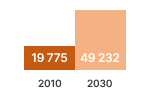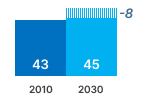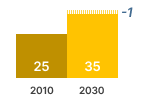Ventilation units (VUs) use electricity to expel stale air from a room, replacing it with fresh air from the outside.
In the heating season, the incoming outside air is colder than the outgoing indoor air. An efficient ventilation unit therefore preferably includes a heat recovery system that uses the heat contained in the outgoing air to warm up the incoming air. In this way heat losses due to ventilation are reduced (as compared to natural ventilation, e.g. opening windows) and energy can be saved on the space heating system.
Consequently energy efficiency of VUs has two aspects: (1) the reduction of electricity consumed by the VU itself, and (2) the reduction of the space heating load and associated reduction of energy consumed by space heating products. If the space heating efficiency is low, the load-reduction due to VUs becomes relatively more important.
Ecodesign regulation 1253/2014 on VUs acknowledges that there may be an interaction between the two efficiency aspects: non-residential VUs having a higher heat exchange efficiency are therefore allowed to consume more power for the fans they employ.
Unidirectional ventilation systems provide an air flow in one direction. This means that the ventilation unit either supplies or exhausts air only. The ventilation equilibrium is balanced by natural air exhaust or supply.
Balanced ventilation systems supply fresh air with the same rate as they expel stale air. This maintains a balanced pressure system in the building. If the ventilation systems is ducted, it should be separated from other ducted systems such as air conditioning, to prevent the disturbance of the pressure balance.
Source: estimations from the Ecodesign Impact Accounting Overview Report 2023











